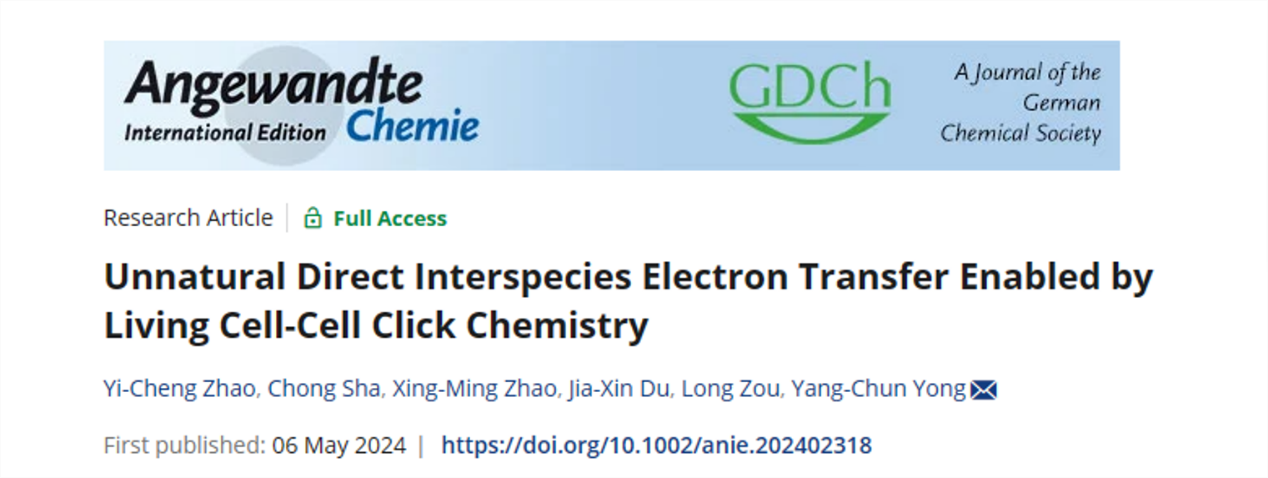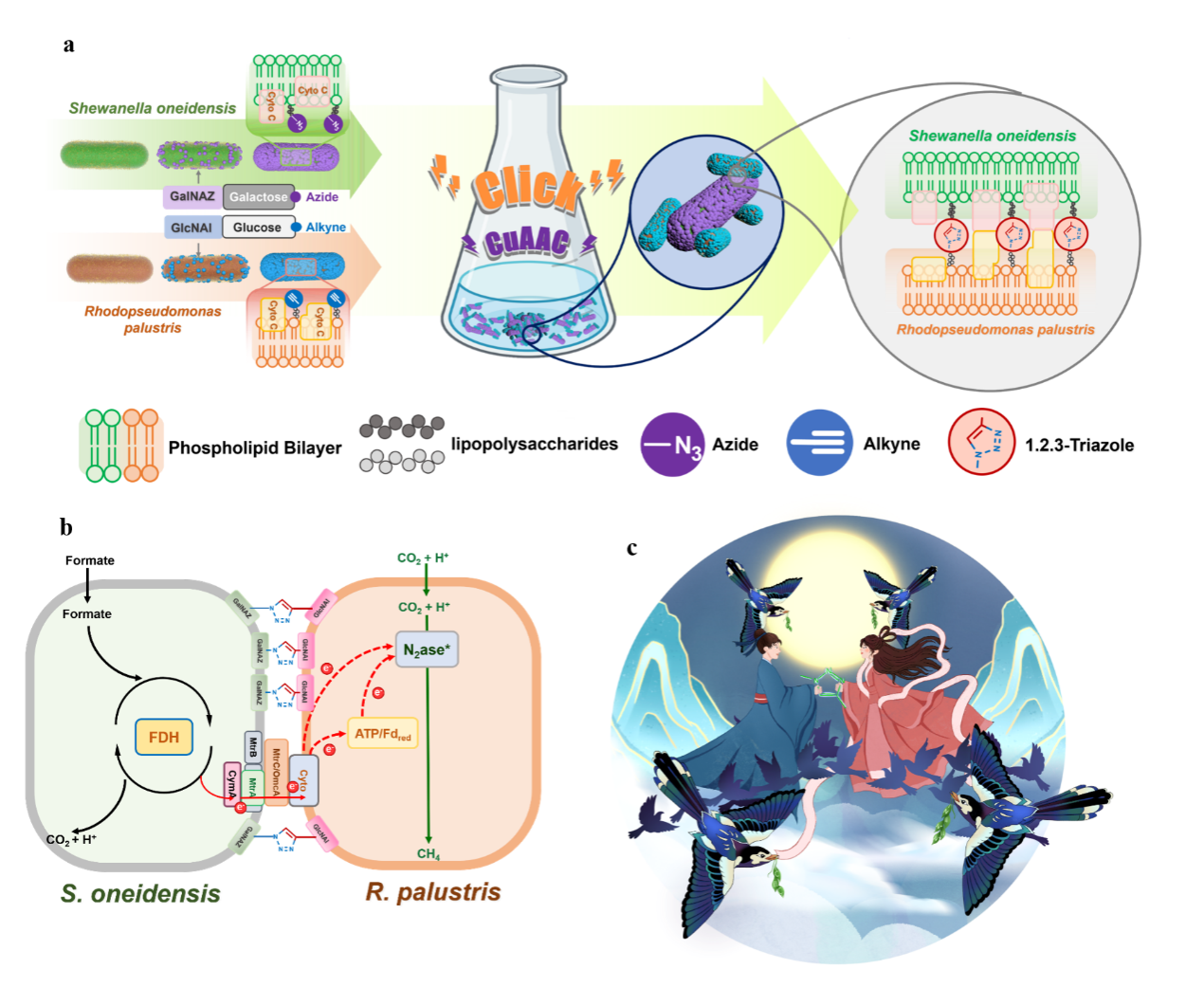Recently, a research team led by Prof. Yong Yangchun from Institution for Energy Research/ Biofuel Institute of Jiangsu University (JSU) announced their latest findings of Unnatural Direct Interspecies Electron Transfer Enabled by Living Cell-Cell Click Chemistry. JSU is the first completion unit and the only corresponding author institution. Prof. Yong Yangchun serves as the exclusive corresponding author, master student Zhao Yicheng and Assistant Researcher Sha Chong from School of the Environmental and Safety Engineering/ Biofuel Institute of JSU are the co-first authors.

International research has recently uncovered the process of microbial energy metabolism, referred to as electric syntrophy, which is facilitated by interspecies electron transfer (IET). Among the various modes of IET, direct interspecies electron transfer (DIET) has emerged as the primary mechanism. DIET plays a pivotal role in sustaining microbial community functions, powering elemental cycling and pollutant transformations on Earth, thereby establishing itself as a forefront research topic in the fields of environmental science and geosciences. Nevertheless, the elucidation of the underlying mechanisms and regulatory factors governing DIET remains a fundamental scientific challenge that has yet to be overcome within this domain.
In order to tackle the aforementioned pivotal challenges, the study advanced a scientific hypothesis, asserting that the "cell-cell distance" serves as the pivotal determinant of DIET, and introduced a novel concept of regulating DIET through "cell magpie engineering" (Figure 1). Pursuant to this hypothesis, the team formulated an innovative strategy titled Living Cell-Cell Click Chemistry, employing S. oneidensis (SO) and R. palustris (RP) as exemplary models. This strategy established a "magpie bridge" connecting SO and RP, facilitating the ultimate union of the "cowherd" (SO) with the "weaver" (RP), thereby achieving direct molecular-scale linkage between cells of diverse genera.

Based on the established linkage between SO and RP at the molecular level, this study marks a global precedent in demonstrating the direct involvement of C-type cytochromes within the extracellular membrane of DIET on the surface of SO. This finding validates the scientific hypothesis that the "cell-cell distance" serves as a pivotal determinant in regulating C-type cytochrome-based DIET in the extracellular membrane. Furthermore, the study achieved the direct transformation of H2-mediated indirect electron transfer (MIET) between SO and RP bacteria into DIET, thereby confirming the practicality of the "cell magpie engineering". This research offers a novel reference and inspiration for the artificial manipulation and regulation of the DIET process, as illustrated.

Drawing upon the principle of "constructing to acquire understanding" inherent in synthetic biology, the present investigation offers unequivocal evidence supporting the role of C-type cytochrome-based DIET within the extracellular membrane. This discovery hints at the existence of a subtler and hitherto undisclosed DIET pathway in nature, thereby ushering in a novel perspective for exploring the mechanisms underlying interspecies electron transfer. Furthermore, leveraging the concept of "constructing for utilization," this study introduces the concept of "cell magpie engineering", which holds promise as a means to regulate the DIET process and offers a fresh perspective for the application of microbial electron transfer engineering.

